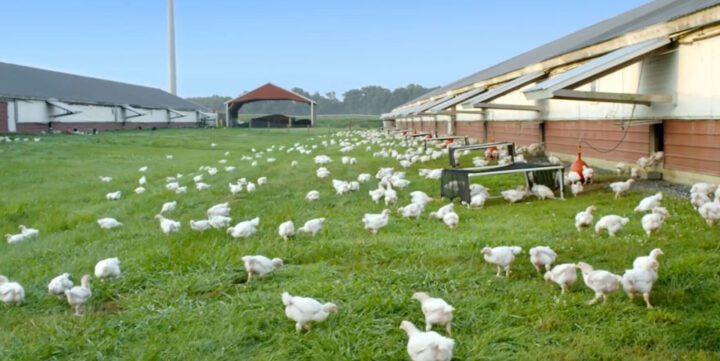Avian Influenza Reaches Australia
August 11, 2024
The History of Avian Influenza
Bird flu, also known as avian influenza, is a viral infection that primarily affects birds but has the potential to infect humans and other animals. The history of bird flu can be traced back to the early 20th century, with the first recorded outbreak occurring in Italy in 1878. However, it wasn’t until the late 1990s that the world began to take serious notice of the virus due to its significant impact on poultry farms and its occasional transmission to humans.
The most notorious strain, H5N1, emerged in Hong Kong in 1997, marking the first time it crossed the species barrier to infect humans. This outbreak resulted in severe respiratory illness and a high mortality rate among those infected, sparking global concern. Subsequent outbreaks in the early 2000s spread to various parts of Asia, Europe, and Africa, leading to widespread culling of poultry to contain the virus.
Bird flu viruses are classified into two categories based on their pathogenicity in birds: low pathogenic avian influenza (LPAI) and highly pathogenic avian influenza (HPAI). The H5N1 strain belongs to the latter category, known for causing severe disease in birds and having a higher risk of zoonotic transmission. In humans, infection can result from direct or indirect contact with infected birds, contaminated environments, or consumption of undercooked poultry products.
The 1st Australian Case is Documented
With avian influenza cases on the rise in Australia, concerns about the country’s preparedness and the potential risks posed by the virus have intensified. On 19 June, the NSW Department of Primary Industries issued an alert about an avian influenza detection at a commercial poultry farm in the Greater Sydney Basin. The department stated that the affected property is under quarantine, and they are collaborating with national response teams to manage the outbreak.
This year, Australia has witnessed confirmed outbreaks of highly pathogenic avian influenza (HPAI) strains, including H7N8 in the Greater Sydney Basin and H7N3 and H7N9 in Victoria. Additionally, Victoria recorded its first-ever human case of H5N1, involving a child who had recently returned from overseas. The child experienced a severe infection but has since recovered fully.
Experts are divided on the threat level of avian influenza, commonly known as bird flu. Some warn that it could trigger the next major pandemic, while others believe the risk remains low due to the limited human-to-human transmission. Professor Adrian Esterman, Chair of Biostatistics and Epidemiology at the University of South Australia, notes an increase in patient concerns about bird flu.
While avian influenza in humans is rare, with 889 cases reported globally by the World Health Organization (WHO) since 2003, Dr. Esterman cautions that these numbers could escalate if the virus mutates to allow human-to-human transmission.
Influenza Vaccination Paramount
A recent international review emphasised vaccination as the best defence if bird flu becomes a larger threat. The study stated that avian influenza viruses of the H5N1, H7N9, and H9N2 subtypes are of pandemic concern through their global spread and sporadic human infections, and that preventing and controlling these viruses is critical due to their high threat level.
Biotechnology company CSL Seqirus recently signed an agreement with the European Commission to provide 665,000 “pre-pandemic vaccine doses.” Raja Rajaram, Head of Global Medical Strategy at CSL Seqirus, commented that while the general population’s risk is low, those exposed to infected animals or contaminated environments are at a higher risk.
Meanwhile, Moderna is in late-stage trials of mRNA bird flu vaccines in the US. Professor Ian Barr, Deputy Director of the WHO Collaborating Centre for Reference and Research on Influenza at the Doherty Institute, advised clinicians to be aware of the risks for travellers and those handling birds in endemic regions, although the overall risk remains minimal. He mentioned that there are unprecedented outbreaks of avian influenza, which are quite deadly for poultry, but generally much milder in humans. There is a small risk that these viruses might become more transmissible in mammalian species, but they have not been very effective at infecting humans to date.
Professor Barr added that it remains uncertain if the deadly H5N1 variant will spread more widely, as the H5s haven’t transmitted efficiently between humans yet.
GPs Required to Stay Vigilant
Given the risks applicable to this disease, it’s wise to consider screening criteria. Any patient suspected of having bird flu (avian influenza) should be treated with high precaution. There are several key indicators that can be screened to gather comprehensive information. Initially, assessing the patient’s symptoms, noting when they started and if they include fever, cough, sore throat, difficulty breathing, muscle aches, headache, or fatigue. Understanding the severity and progression of these symptoms is also crucial, especially if there are severe respiratory issues such as shortness of breath, chest pain, or rapid breathing. These symptoms on their own should not raise alarms, however the circumstances around them and the following screening concerns will help to gauge risk.
The patient’s recent exposure history is important, including if the patient has had any contact with birds, whether domestic or wild, and if they have visited places where birds are kept, such as poultry farms or live bird markets. Additionally, recent travel to regions where bird flu outbreaks have been reported, noting the specific locations and travel dates, should be considered. Although the cases in Australia are currently very low, if the patient has been in close contact with anyone diagnosed with or suspected of having bird flu or if they have cared for or lived with someone showing symptoms this should raise alarm bells.
Work environments like poultry farms, veterinary clinics, or bird markets could be considered a risk factor in these early moments, including engaging in activities such as birdwatching or raising poultry.
Next Steps
In light of the recent increase in avian influenza cases in Australia, it is essential for health practitioners to remain vigilant and proactive in identifying and managing potential infections. Early detection and intervention are crucial in mitigating the risks posed by this virus. By carefully assessing symptoms, exposure history, travel patterns, contact with infected individuals, occupational and recreational risks, underlying health conditions, and vaccination status, practitioners can effectively evaluate and address the threat of bird flu.
Clear and timely communication is paramount in the early stages of any outbreak. Sharing information about potential cases, emerging patterns, and preventive measures can significantly enhance the ability of healthcare systems to respond swiftly and effectively. Ensuring that health practitioners, public health officials, and the broader community are well-informed fosters a coordinated effort to control the spread of the virus. Ultimately, robust communication channels and early intervention strategies are critical components in safeguarding public health and preventing widespread outbreaks.
For more information on what’s required in NSW, see the alert release here – https://www.dpi.nsw.gov.au/animals-and-livestock/poultry-and-birds/health-disease/avian-influenza
Cargnin Faccin, F., & Perez, D. R. (2024). Pandemic preparedness through vaccine development for avian influenza viruses. Human Vaccines & Immunotherapeutics, 20(1). https://doi.org/10.1080/21645515.2024.2347019












